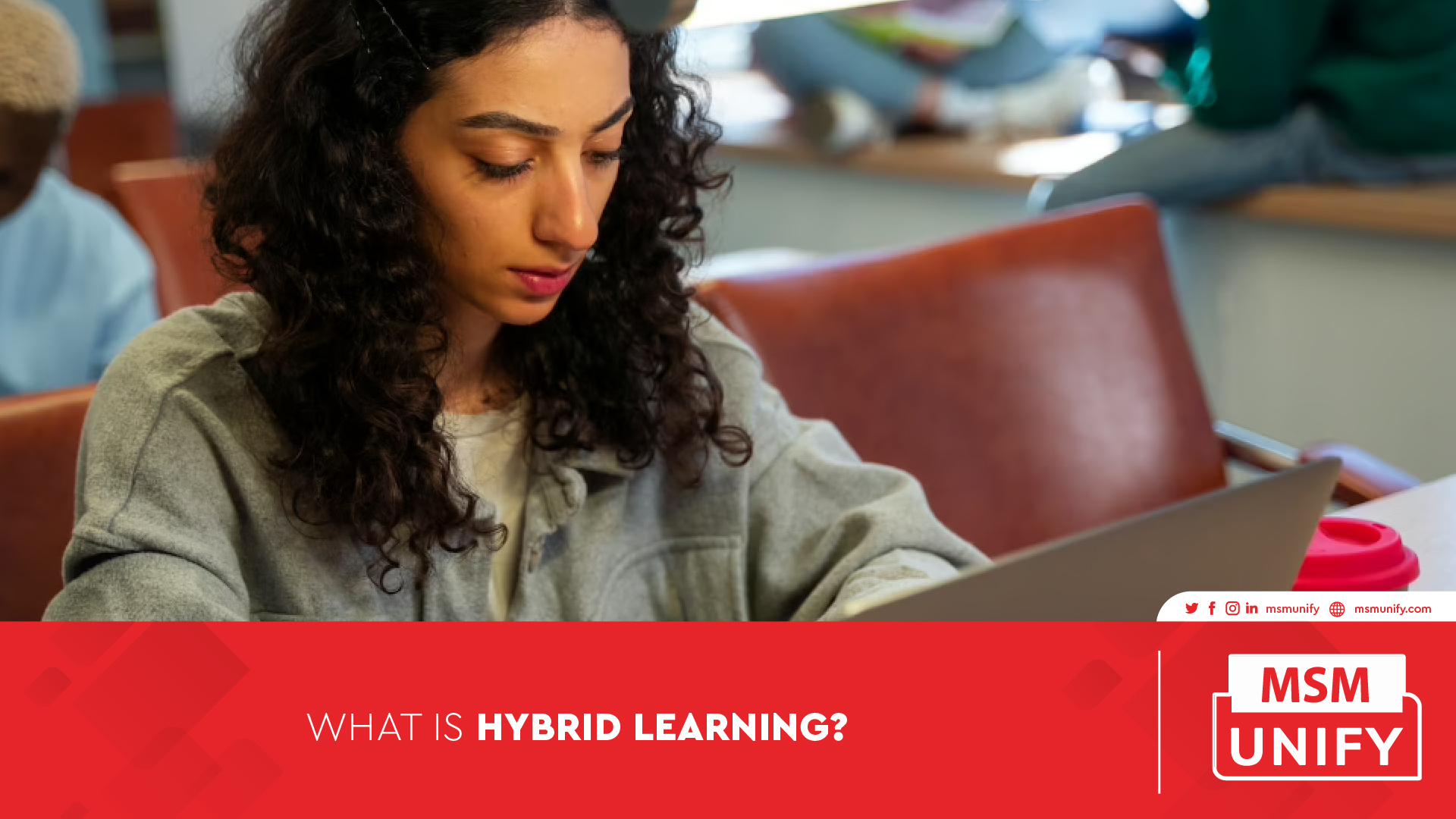Hybrid learning is an educational approach that combines traditional in-person instruction with online learning. In a hybrid learning environment, students have the opportunity to participate in both synchronous (real-time) and asynchronous (self-paced) learning activities. This approach to education has become increasingly popular in recent years, especially in response to the COVID-19 pandemic.
A hybrid program allows for greater flexibility and personalization of instruction, as students can choose when and where they complete their online coursework while still benefiting from face-to-face interactions with their teachers and peers. This model of learning has the potential to provide the best of both worlds, combining the advantages of online and in-person instruction to create a more effective and engaging learning experience for students.
Hybrid Learning Benefits
A hybrid mode of learning has the potential to create a more flexible and personalized approach to education and can benefit both students and educators by providing a more engaging and effective learning experience.
Flipped classroom: students watch pre-recorded lectures or complete online assignments before coming to class. During class time, they engage in discussions, collaborative activities, or work on assignments.
Station rotation: involves students rotating between different learning stations or activities, which could include online learning, small-group instruction, or independent work.
Flex model: students have control over the pace and schedule of their learning. They complete online coursework on their own time and attend in-person sessions for support or to work on projects.
Online lab: students complete the majority of their coursework online, but attend in-person lab sessions for hands-on or collaborative activities.
A la carte: students take individual online courses to supplement their in-person learning.
Enriched-virtual: combines online and in-person learning, but students spend the majority of their time learning online and attend in-person sessions for additional support or to work on projects.
Hybrid Learning Components
These components of hybrid learning can be combined in a variety of ways to create different models or approaches to education that meet the needs of students and instructors.
In-Person Instruction
Students attend traditional face-to-face classes, lectures, discussions, or other types of activities in a physical setting. This could include activities such as lab work, group projects, or hands-on activities that require direct interaction with instructors or peers. In-person instruction can provide students with opportunities to engage with their instructors and peers in a more direct and personal way, receive immediate feedback, and ask questions in real-time.
Online Learning
Involves students completing coursework, assignments, or activities through online platforms or tools. Online learning can include a variety of activities, such as watching pre-recorded lectures, participating in online discussions, completing online quizzes or assessments, or accessing digital resources. Online learning can provide students with more flexibility in terms of when and where they complete coursework and can allow them to work at their own pace.
Blended Learning
Blended learning combines in-person instruction and online learning to create a more flexible and personalized approach to education. In a blended learning environment, students engage in both traditional face-to-face activities and online activities. The goal of blended learning is to create a more integrated and seamless learning experience that takes advantage of the benefits of both in-person and online learning.
Hybrid Learning Implementations
Collaboration and communication between students, teachers, and administrators are also crucial for creating a successful hybrid learning environment.
Technology
Technology is a crucial aspect of implementing a hybrid mode of learning. The use of technology enables students to access online course materials, collaborate with peers and instructors, and complete assignments from anywhere with an internet connection. Educational institutions must ensure that they have the necessary technological infrastructure and resources in place to support hybrid learning.
Teacher Training
Teachers need to be trained in both the technical and academic aspects of online instruction. This includes learning how to use online tools and resources effectively, designing and delivering effective online content, providing feedback, and facilitating online discussions and collaboration. Institutions must provide teachers with training and professional development opportunities to ensure they are equipped with the skills needed to deliver quality hybrid learning experiences.
Student Support
Hybrid learning may present unique challenges for some students, such as those who struggle with time management or who lack access to necessary technology or resources. Institutions must provide students with support services such as technical support, academic advising, and tutoring to ensure they have the resources they need to be successful. Instructors must be available to answer student questions and provide feedback in a timely manner.
Collaboration
Collaboration is a key aspect of the hybrid mode of learning, as it allows students to work together and learn from one another. This can be facilitated through online discussion forums, group projects, or other collaborative activities. Instructors must provide opportunities for students to collaborate with their peers and facilitate these activities effectively to ensure students are engaged and learning.
When implemented successfully, a hybrid mode of learning can improve student outcomes, prepare students for success in the 21st century, and provide a more personalized and effective approach to education. With the continued growth of technology and the increasing need for flexible education models, hybrid learning is likely to become an increasingly important component of education in the years to come.












